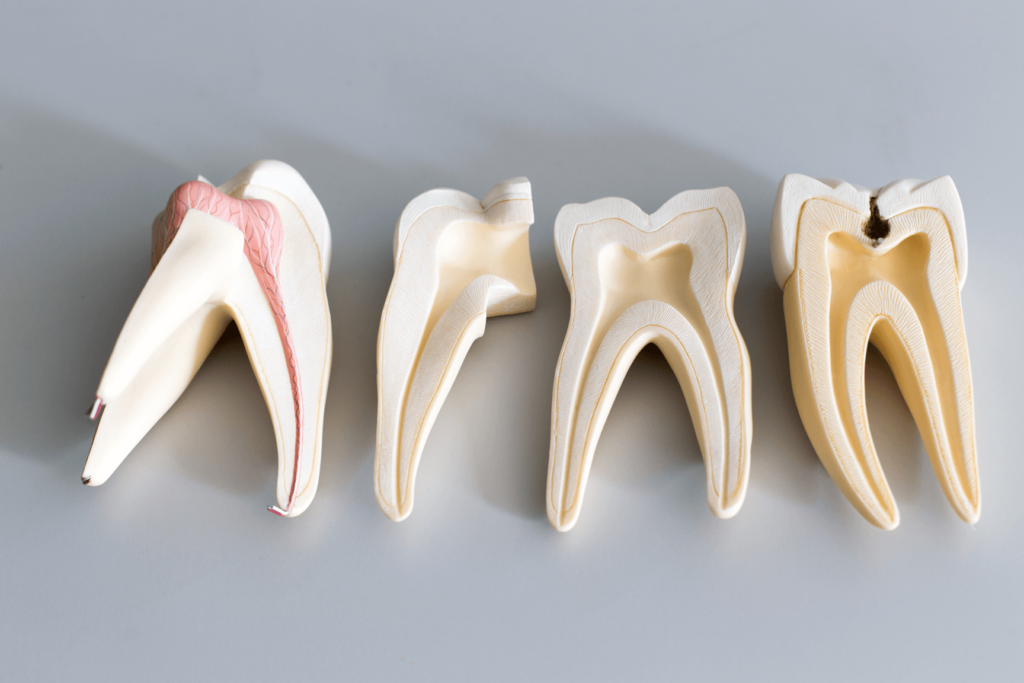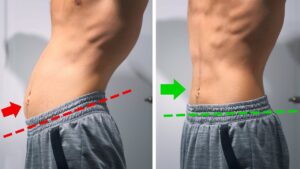
When the tooth’s blood or nerve supply is compromised due to decay or an accident, root canal therapy is required. It is generally necessary for teeth that have very deep fillings or for teeth with untreated, very deep caries.
If the pulp (nerve) becomes infected or inflamed, the infection can spread along the root canal of the tooth and eventually cause an abscess. The infection could progress and the tooth would need to be pulled if the root canal procedure is not done.
Root Canal Treatment
Endodontic (root canal) therapy solves concerns with swelling of the pulp, the internal tissues of the tooth. If you do not contact the dentist in a timely manner, this will lead to the spread of the pathological process, which will reduce the likelihood of maintaining a healthy tooth.
Indications For Treating A Tooth’s Root Include:
- Pulpitis, inflammation of the soft internal tissues of the tooth.
- Acute and chronic periodontitis.
- Pulp damage: crown chipping, etc.
- Preparation for prosthetics:
- preparation for metal-ceramic requires filing 1.5-2 mm of enamel.
- after a long extraction of teeth (adjacent teeth begin to lean towards the removed ones).
- Preparation for the installation of pin tabs (full canal filling is required).
Treatment of tooth canals, stages:
- Radiography is necessary to assess the root and tissues, the volume and shape of the cavity. Based on this, the appropriate method of treatment is determined.
- Anesthesia, root canal treatment is a very painful process.
- Dissection of hard tissues allows the doctor to gain access to the pulp.
- Pulp removal. A painstaking process, it is important to thoroughly clean the pulp chamber to prevent the spread of infection.
- Medical treatment, anitiseptization of the pulp chamber.
- Determining the length of channels. An apex locator is used to painlessly and accurately determine the length.
- The dentist selects the material in accordance with the characteristics of the root canal, wall thickness and the presence of contraindications. An inlay, crown, or filling is used to restore the tooth’s anatomical shape once the canals have been sealed. In some cases reinforcing pins are used.
- Results control. After cleaning and filling the canals, additional diagnostics are necessarily carried out in order to verify the effectiveness of the treatment.
On the first day after therapy, soreness and sensitivity are noted. You should see a doctor if the discomfort does not go away after a few days.
After filling the canals, careful oral hygiene is recommended: brushing twice a day, rinsing, using a thread.
Cost of root treatment
The price for this dental service depends on:
- The number of channels.
- The materials and methods used.
- The need for prosthetics.
To choose the right treatment option and clarify the price, you need to sign up for a consultation.
Benefits Of Treatment At Dental
Our specialists provide endodontic services of any orientation. The work uses modern techniques that guarantee comfortable treatment of the canals of the tooth.
Special Bonuses For Patients:
- Favorable prices (indicated in the price list or calculated after consulting a dentist).
- Individual treatment plan (stages are described in a personal card).
- Acceptance of out-of-town patients.
Come for a consultation at Dental and guarantee yourself the quality of any dental service.
When Do I Need An Endodontic Treatment?
Many times, the patient does not feel any pain in the early stages of the infection, so it is not mandatory that the pain be the trigger that prompts the visit to the dentist.
In some cases, the tooth darkens in color, which means that the nerve of the tooth has necrotized (died) and requires emergency root canal treatment (and in this case it is possible that the patient does not feel any pain).
If the dental pulp becomes infected and is not treated in time, the infection can spread through the canals to the root of the tooth, which can lead to an abscess and much more complex interventions.
Dull or severe pain, pressure pain, are the main symptoms that the infection has set in at the root of the tooth.
The infection will progress and the tooth will need to be pulled if the root canal procedure is not performed.
Does Having A Root Canal Hurt?
A local anesthesia is used, and the procedure should resemble that of a filling, although the sessions are normally longer. Usually, the patient may feel a slight pain or discomfort for 3-4 days after the treatment. You can see a difference compared to the other dental elements, as well as an increased sensitivity for a few weeks.
What Occurs If The Root Canal Procedure Is Skipped?
Once the pulp is infected, the process is irreversible, unable to be resolved without treatment. Leaving the tooth with the infected pulp is not advised. Tooth extraction or apical excision are alternatives to root canal therapy.
How Will The Tooth Look After Having A Root Canal?
It’s possible that the tooth will have a small discolouration following the procedure. If color changes occur, there are treatments to bring the tooth back to its natural color.
Why Does The Infection Return?
In 80% of cases, root canal treatment is successful, although it largely depends on the difficulty of the tooth. If the infection returns, the treatment can be repeated.
What Risks Are Associated With Getting A Root Canal?
- After the therapy, there is a chance of experiencing some mild discomfort for a few days. The pain is normally counteracted with painkillers, but it can be somewhat more severe in some cases.
- The instruments with which the root canal treatment is performed are quite fragile, and there is a possibility that they may break inside the root.
- The canal obturation might not cover the entire root tip or it might be insufficient. The possibility of the tooth becoming punctured exists.
All these complications can lower the success rate for that tooth or delay healing. In some cases, as a result of a complication, the tooth may be extracted.
How Durable Is The Tooth Now That It Has Undergone Root Canal Therapy?
Teeth on which root canal treatments are performed are more brittle and less resistant than teeth without root canal treatment, therefore it is recommended to cover the tooth with a crown a few months after the treatment, to be sure of its success. The initial degree of destruction of the tooth must also be taken into account!
Dental Clinic makes you smile beautifully.






